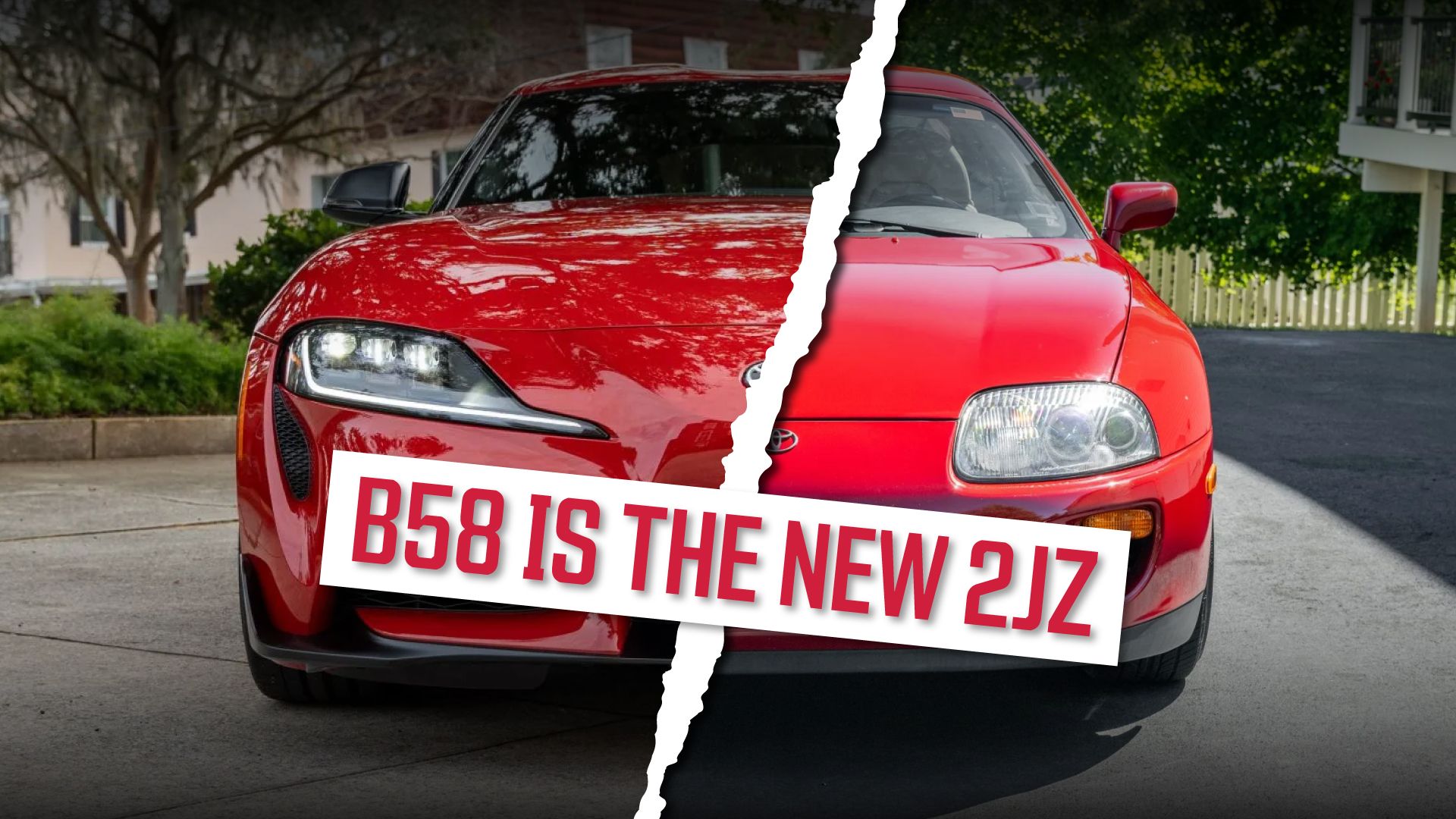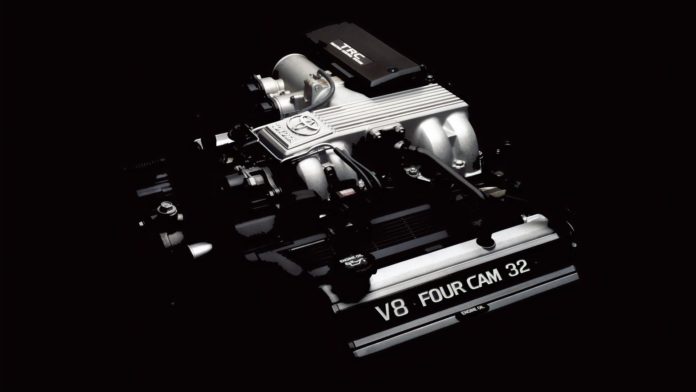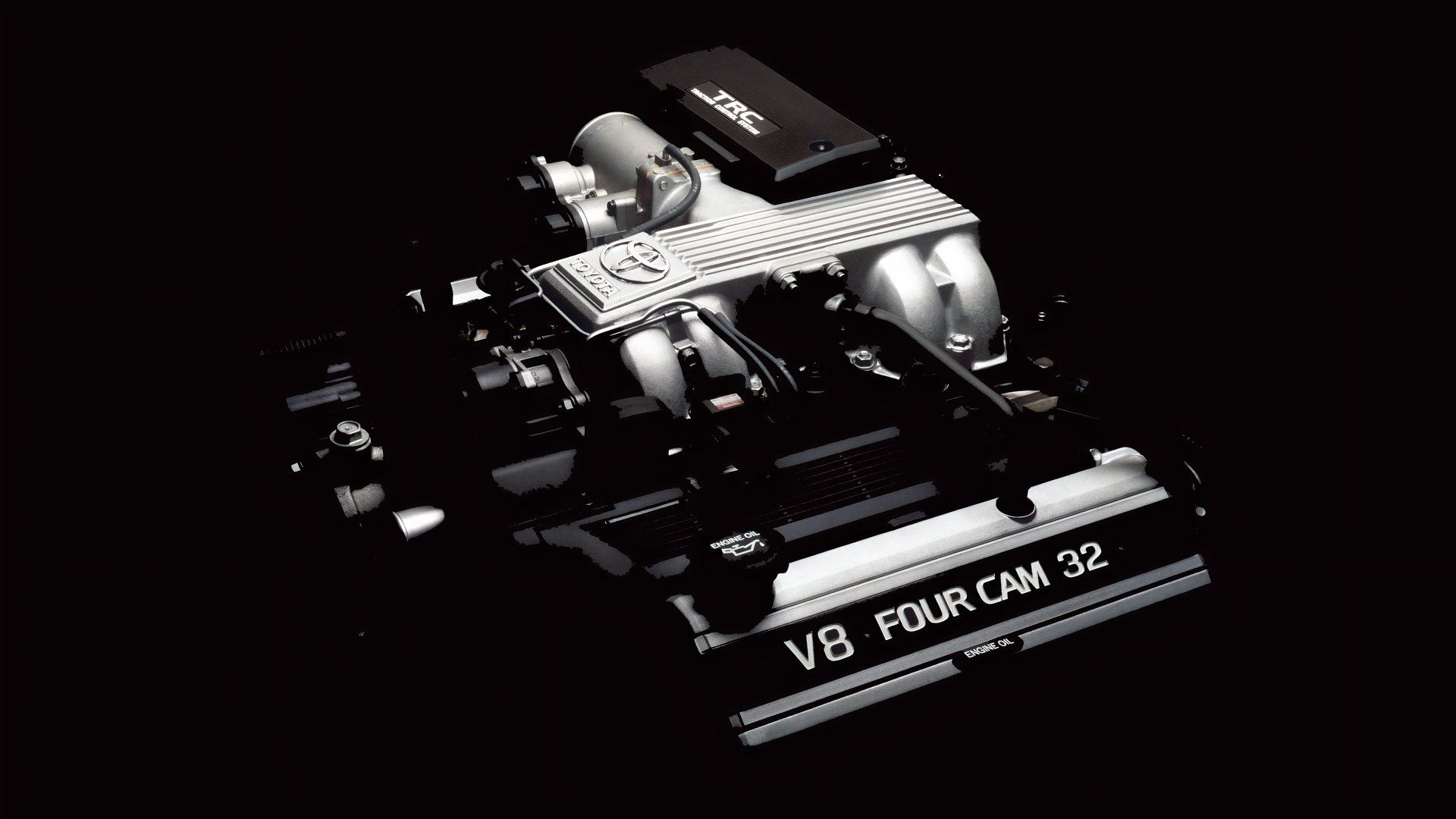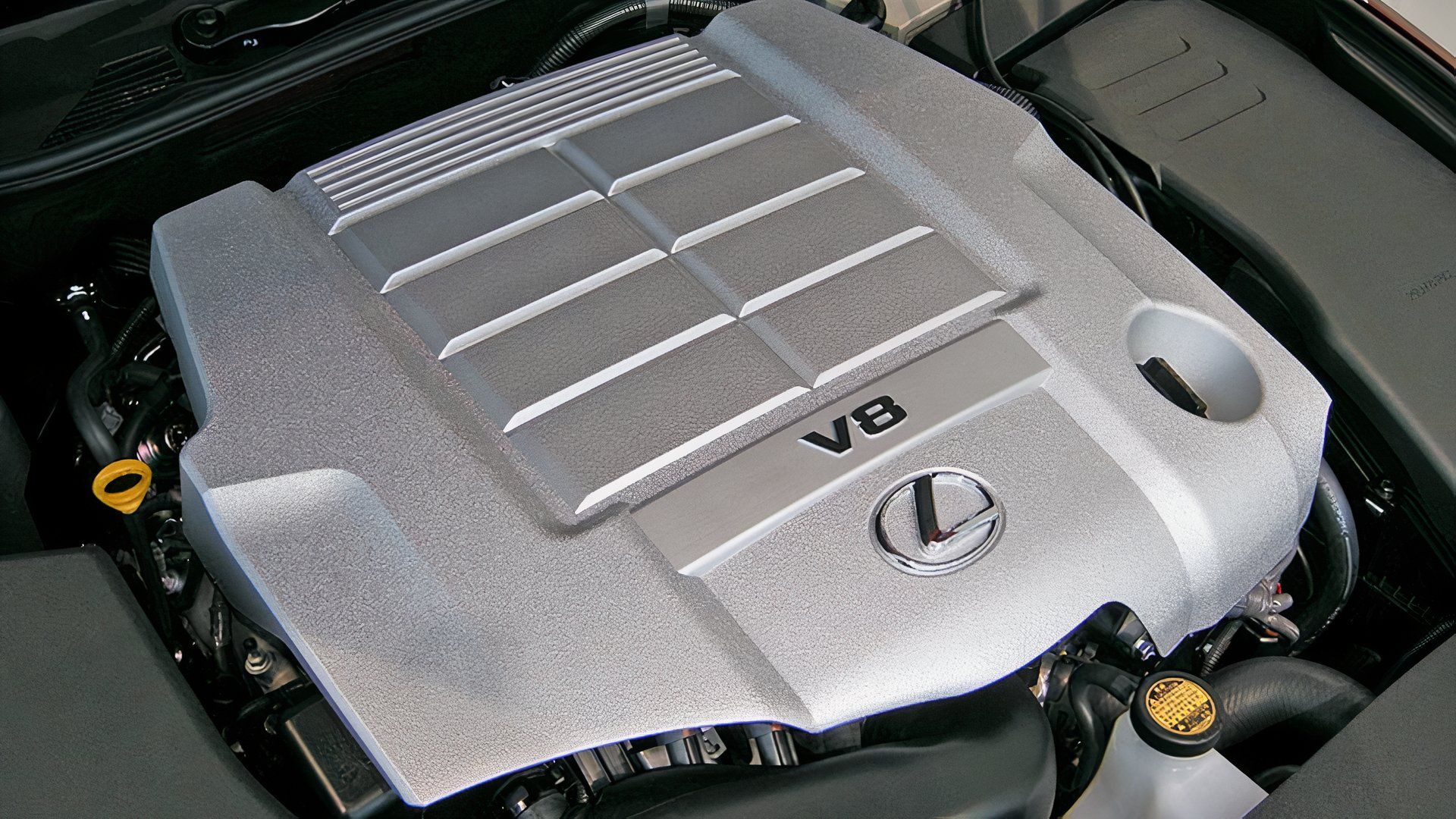Toyota has a reputation for reliable cars and even more dependable engines. Some, like the 2JZ featured in the MK4 Toyota Supra, became tuner icons. In contrast, others, like the 2GR family, are known for their robustness, impressive naturally-aspirated output, and ubiquity across a wide range of models, from the RAV4 to the Lotus Emira. The UZ-FE family might not have the same cachet, but this V8 engine is the Japanese answer to America’s much-loved LS engine.
Related
Most Reliable Engines: 10 Motors That Just Won’t Die
They’re not all Toyota motors, either.
It is refined, durable, and relatively unstressed. It spans three different variants, from the 1UZ to the 3UZ. The 2UZ stands out for being Toyota’s pickup truck and SUV engine, while the 1UZ is featured mainly in Lexus and Toyota luxury cars and sedans. Toyota’s UZ is prominently featured in Lexus’ long-running LS 400 sedan. The 3UZ succeeded the 1UZ and offered more power. In this article, we will take a look at the wide range of vehicles that have used the UZ-FE.
The Toyota UZ-FE Engine Family
|
Engine Code |
Toyota 1UZ-FE |
Toyota 2UZ-FE |
Toyota 3UZ-FE |
|---|---|---|---|
|
Engine Layout |
4.0-liter, NA, 90° V8 |
4.7-liter, NA, 90° V8 |
4.3-liter, NA, 90° V8 |
|
Block material |
All-alloy |
Iron block, alloy head |
All-alloy |
|
Features |
DOHC, 32-valve, multipoint injection |
||
|
Power |
242 to 300 hp |
230 to 282 hp |
288 to 300 hp |
|
Torque |
258 to 310 lb-ft |
300 to 325 lb-ft |
317 to 325 lb-ft |
There are three generations of the UZ-FE family, all V8s, with three capacities ranging from the 4.0-liter 1UZ-FE to the 4.7-liter 2UZ-FE and finally, the 4.3-liter 3UZ-FE. Beginning in 1989, the 1UZ-FE was featured in many of Toyota’s and Lexus’ luxury cars in the US, such as the Lexus LS 400 and GS 400, as well as the SC 400 coupe convertible. Many other models and derivatives, such as the Toyota Celsior, Aristo, and Crown Majesta, were sold in other markets with this engine. It received Toyota’s VVT-i variable valve timing (and an increased compression ratio) in 1997, which generally raised power from the 260-hp range to about 290 hp. The 1UZ-FE was also featured on Ward’s Best Engines list in 1998, 1999, and 2000.

Related
10 Engines That Won Engine Of The Year More Than Once
10 of the best engines in recent history, with more than one award to their name.
The 3UZ-FE replaced the 1UZ-FE despite the decision to number the engines in order – 1, 2, 3. The larger 4.7-liter 2UZ-FE was instead designed for pickup trucks and SUVs. For the 2UZ, the engine block was iron instead of aluminum for durability and focused on torque lower down in the rev range; it was used in an array of Toyota and Lexus SUVs and pickups such as the Toyota Tundra, Land Cruiser, and Lexus GX. Toyota’s 3UZ engine increased capacity from 4.0 liters to 4.3 liters, resulting in small power/torque gains in the models it featured in. Famed for its refinement and unstressed nature, the UZ-FE family is a long-lasting engine with potential for tuning or as an engine swap instead of the ubiquitous GM LS V8. However, the 2UZ is sometimes overlooked due to its heavier block.
Let’s look at some of the most prominent cars to use this engine.
Lexus LS 400
|
Model |
Lexus LS 400 |
|---|---|
|
Engine Variant |
1UZ-FE |
|
Engine Layout |
4.0-liter, NA V8 |
|
Power |
242 to 290 horsepower |
|
Torque |
258 to 300 lb-ft of torque |
The first time the UZ-FE engine saw the light of day was when it debuted alongside the new Lexus LS 400 in 1989. Lexus’ LS 400 is a full-size luxury sedan, and many will be familiar with the fairly bland looks of the LS 400. Its engine, like the rest of the car, was focused on refinement; a customer’s only choice was a four-speed auto transmission. The 400’s 1UZ-FE was also under-stressed as far as 4.0-liter V8s go. It initially made a measly 242 hp and 258 lb-ft. But power was hardly the point. Lexus wanted to prove that the engine could last for decades without any costly fixes.

Related
Lexus LS Generations: Everything You Need To Know In One Place
The cultured Lexus LS has provided buyers with a refined and reliable luxury alternative to the traditional full-size sedans for more than 30 years.
Like all the other cars that featured the 1UZ-FE, the Lexus had a significant bump in power due to the switch to Toyota’s VVT-i (variable valve timing) for the 1998 model year, hitting nearly 300 hp. Luckily, the 1UZ was also of an all-alloy construction, which helped make the nose a little lighter than it might have been for this luxurious land yacht. Later, the upgrade to the 4.3-liter 3UZ-FE changed the LS 400 to the LS 430.
Lexus SC 400
|
Model |
Lexus SC 400 |
|---|---|
|
Engine Variant |
1UZ-FE |
|
Engine Layout |
4.0-liter, NA V8 |
|
Power |
250 to 290 horsepower |
|
Torque |
260 to 300 lb-ft of torque |
The Lexus above looks like a third-gen Toyota Soarer, and that’s because the Soarer shares the design of the first-generation Lexus SC 400. However, there are differences between the two models that go beneath the skin. While the Lexus SC 400 utilized the 1UZ-FE, the entry-level SC 300 included a different engine: the famous 2JZ straight-six, made famous by the MK 4 Toyota Supra.

Related
Why The BMW B58 Engine Is A Modern 2JZ
Few inline-six motors garner the same adoration as the 2JZ when it comes to tuning potential, but the BMW B58 comes close.
In the compact, rear-wheel drive SC 400 coupe, the 1UZ’s modest power output made more sense from a sports perspective than the LS 400. It also received the same bump in power in 1997 with the VVT-i upgrade. Interestingly, this power upgrade would make the SC 400 more powerful than even the twin-turbo Supra, but the SC 400 would not receive a manual transmission (even though the SC 300 did), cutting its dreams short of being a real sports car.
Lexus GS 400
|
Model |
Lexus GS 400 |
|---|---|
|
Engine Variant |
1UZ-FE |
|
Engine Layout |
4.0-liter, NA V8 |
|
Power |
249 to 300 horsepower |
|
Torque |
260 to 310 lb-ft of torque |
Positioned between the smaller Lexus ES and the larger LS, the GS – first produced in 1991 – was a rear-wheel drive sedan with automatic transmissions and a focus on luxury. It shared the same 1UZ-FE as the LS 400 and SC 400 with broadly similar outputs, receiving the same power and torque upgrade for the second generation in 1997, which would improve fuel economy as well as make the car faster. Like the Lexus SC, the GS range also included the Toyota 2JZ-GE engine for the GS 300. Its slightly sportier looks and relatively compact profile made the GS a great luxury alternative to the usual German suspects with surprising sales success, even if it lacked the same dynamics of the heavy hitters.
Lexus GX 470
|
Model |
Lexus GX 470 |
|---|---|
|
Engine Variant |
2UZ-FE |
|
Engine Layout |
4.7-liter, NA V8 |
|
Power |
235 to 270 horsepower |
|
Torque |
320 to 330 lb-ft of torque |
The first generation Lexus GX 470 ran from 2003 through 2009 model years, with the 2UZ-FE engine and a five-speed automatic as its standard and only powertrain. It is a mid-sized luxury SUV based on the Toyota Land Cruiser Prado, which was not sold in the US. With a relatively low power output but a strong torque figure of 320 lb-ft available from as little as 3,400 rpm, the 2UZ fulfills its role as a durable and reliable V8, optimized for heavy-duty use rather than for speed. For the 2005 model year, the GX 470’s 2UZ received the VVT-i upgrade that increased power significantly, also raising torque further. The different applications of the UZ engines show the differences in focus between the 1UZ and 2UZ.
Toyota Land Cruiser
|
Model |
Toyota Land Cruiser (J100) |
|---|---|
|
Engine Variant |
2UZ-FE |
|
Engine Layout |
4.7-liter, NA V8 |
|
Power |
228 to 265 hp |
|
Torque |
302 to 310 lb-ft |
Another iconic implementation of the 4.7-liter 2UZ-FE is the Toyota Land Cruiser from the J100 generation. Replacing the J80 and running from 1998 – 2007 model years, the Land Cruiser was available with a straight-six gas engine and a variety of diesel engines, none of which came to the US. Instead, the US market got the 2UZ engine, which offered 228 hp and 302 lb-ft before the VVT-i’s power hike later on.
3:10

Related
Reliably Rugged: 8 Unstoppable Toyota Off-Road SUV Models
When you need to conquer the world, a Toyota SUV is the right car for the job.
Standard four-wheel drive was offered, as was interestingly, the addition of independent front suspension (IFS) for the first time. IFS offers many advantages (as well as some disadvantages) over solid suspension and this brought positive changes to the Cruiser’s on-road handling. Many are aware of the Land Cruiser’s reputation for reliability and the decision to use the 2UZ is another testament to its durable build quality and its different focus from the 1UZ.
Toyota Tundra
|
Model |
Toyota Tundra |
|---|---|
|
Engine Variant |
2UZ-FE |
|
Engine Layout |
4.7-liter, NA V8 |
|
Power |
245 to 282 hp |
|
Torque |
315 to 325 lb-ft |
A wide number of Toyota SUVs used the 2UZ-FE engine as well as the Toyota Sequoia. It also featured in the Tundra pickup truck – the only truck to feature in this list, as well as the only truck to use the 2UZ. The first generation Tundra ran from 2000 – 2006 and shared many of its components with the mechanically-similar Sequoia. There were various engines available alongside the Tundra’s 2UZ V8, including two V6s, but the 2UZ’s superior torque was the best match for the full-size pickup. As with most other models to use versions of the UZ engine, the introduction of VVT-i raised its torque to an impressive 325 lb-ft. For the second generation Tundra in 2007, the UZ’s successor – the UR engine family – appeared in the form of a 4.6-liter and 5.7-liter V8 on various models, with the 2UZ continuing as the base engine until 2009.
Lexus LS 430
|
Model |
Lexus LS 430 |
|---|---|
|
Engine Variant |
3UZ-FE |
|
Engine Layout |
4.3-liter, NA V8 |
|
Power |
290 horsepower |
|
Torque |
320 lb-ft of torque |
Along with an updated exterior and other improvements, the Lexus LS 430 also received the 3UZ-FE. The 4.3-liter V8 – an increase of 0.3 liters over the 1UZ-FE – did little to increase power over and above the post-VVT-i 1UZ-FE engines, but it meant the UZ family lived on until 2006 in the Lexus LS range. Toyota increased the bore (diameter of the cylinders) from 87.5 mm to 91 mm to achieve the extra capacity, and the LS 430 offered a useful 320 lb-ft of torque which once again went to the rear wheels via a 5 or 6-speed automatic. This engine was to be the swan song for the LS range, as well as many other models in the Lexus / Toyota catalog, to be replaced by the UR family of engines.
Toyota Crown Majesta
|
Model |
Toyota Crown Majesta |
|---|---|
|
Engine Variant |
3UZ-FE |
|
Engine Layout |
4.3-liter, NA V8 |
|
Power |
290 hp |
|
Torque |
317 lb-ft |
The Toyota Crown Majesta is a luxury sedan based on the same platform as the Toyota Crown – an upmarket model that hasn’t been sold in the US since the 70s. The Toyota Crown was only reintroduced recently as an all-new model. Toyota’s Majesta, while sharing the underpinnings of the Crown, was longer and featured different styling as well as a different interior. It was sold in Japan and other select markets. For the first through third generations, the Majesta utilized the 4.0-liter 1UZ-FE engine alongside the returning 2JZ 6-cylinder engine. For the fourth generation, the larger 3UZ-FE found its way into the Crown Majesta range. It lasted from 2004-2013 and through the fifth generation Majesta. In its twilight years, it starred alongside the new 4.6-liter 1UR-FSE, which was from the UR family of engines that would replace the UZ family.
Lexus SC 430
|
Model |
Lexus SC 430 |
|---|---|
|
Engine Variant |
3UZ-FE |
|
Engine Layout |
4.3-liter, NA V8 |
|
Power |
288 hp |
|
Torque |
317 lb-ft |
Once again, for the Lexus SC range, the brand shared most of the design and components with the fourth-gen Toyota Soarer. This time around, the SC featured an all-new, rounded, and top-heavy aesthetic that was designed by Toyota and shared across both models. It proved divisive. Under the hood of the SC 430 was the 3UZ-FE, which offered largely the same output as the LS 430 in a smaller body. Even so, despite the power on offer, the SC was still a luxury roadster that tipped the scales at nearly 4,000 lbs, which wasn’t helped by the folding metal roof, which was a standard feature. Running from 2001-2010, the SC 430 outlived its Soarer twin by around 5 years.
The Next V8 Engine: UR Family
Toyota’s UR engine family took over from the UZ-FE, with larger capacities ranging from 4.6-5.0-5.7-liters. It powered many modern derivatives of models that used the UZ-FE. The 1UR-FSE and FE once again featured in luxury sedans and SUVs/trucks, while the 2UR-GSE is a performance-oriented engine that features in the Lexus IS F, RC F, and the IS 500 F-Sport Performance, among others. Toyota’s 3UR-FE was designed for the Toyota Tundra / Sequoia / Land Cruiser, as well as the Lexus LX.
Like other Toyota engines before it, such as the 2GR engine, the UR family was also replaced by Toyota’s extensive Dynamic Force engine family – specifically, the V35A – a twin-turbocharged V6 engine. Although the UZ-FE family wasn’t an impressive powerhouse on paper, its qualities lay in its robust design, refined nature, and reliability. It featured in some of the most reliable cars ever made, such as the Lexus LS 400. Like other legendary Toyota motors, such as the GR family, the V8 was good enough for a wide range of applications, from the best luxury sedans to workhorse trucks. Today, it is a great option for those looking for a silky V8 engine that could offer a lot more than it ever did in standard guise.



